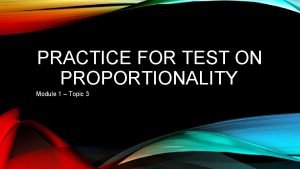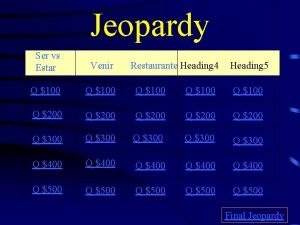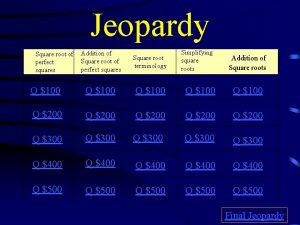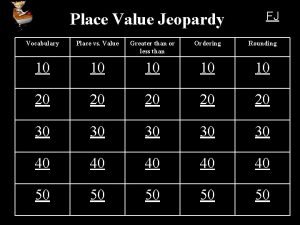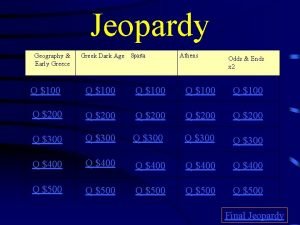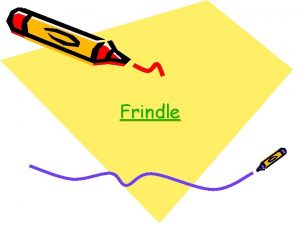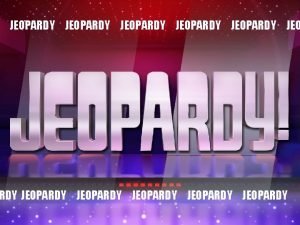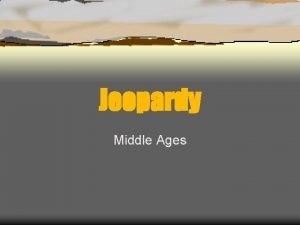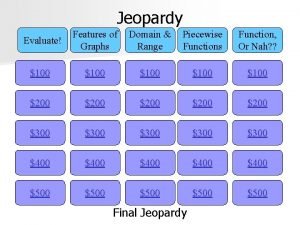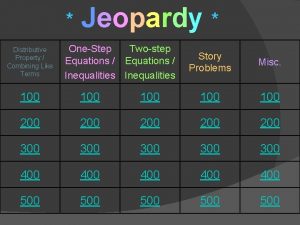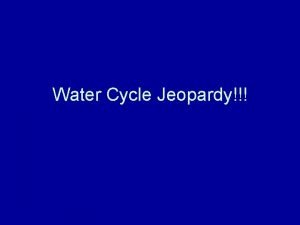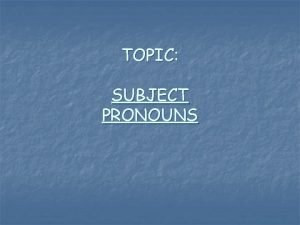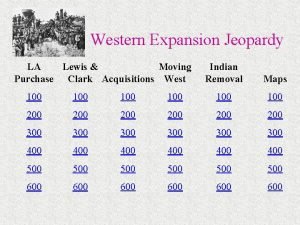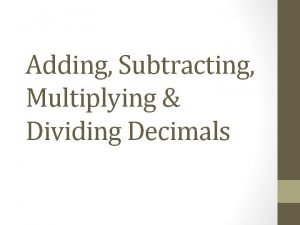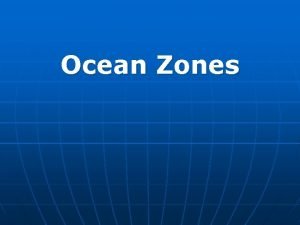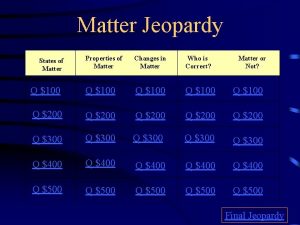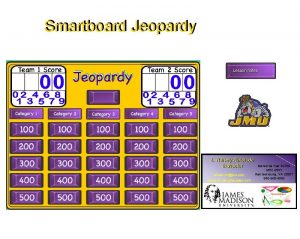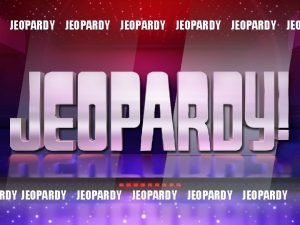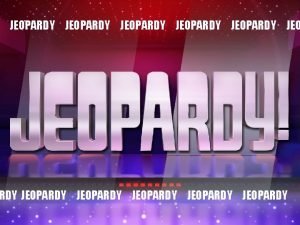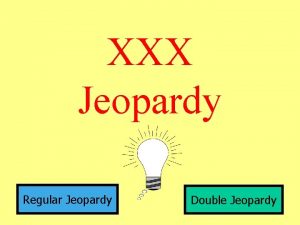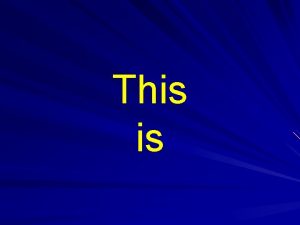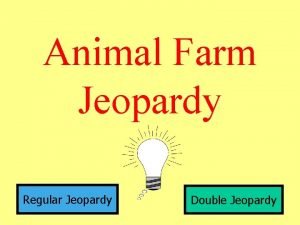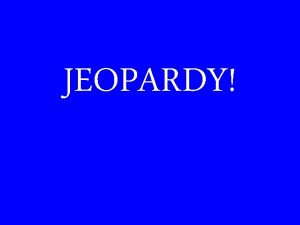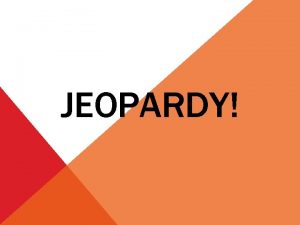Jeopardy Topic 1 Topic 2 Topic 3 Topic



























- Slides: 27

Jeopardy Topic 1 Topic 2 Topic 3 Topic 4 Topic 5 $100 $100 $200 $200 $300 $300 $400 $400 $500 $500 Final Jeopardy

1 - $100 n Circuit with more than one path. n What is parallel?

1 - $200 n A material a current does not easily flow through. n What is an insulator?

1 - $300 n Rapid movement of excess electrons from one place to another. n What is electric discharge?

1 - $400 n Rate at which energy is converted to another form. n What is electrical power?

1 - $500 n Closed path through which a current can flow. n What is a circuit?

2 - $100 n Buildup of electric charges in one place. n What is static discharge?

2 - $200 n Exists around every electric charge. n What is electric field?

2 - $300 n Steady flow of electric. What is an electric current ?

2 - $400 Circuit with only one path. n What is a series?

2 - $500 n A measure for how difficult it is for electrons to flow. n What is resistance?

3 - $100 n Circuit with only one path. n What is a series circuit?

3 - $200 n A material that a current flows through easily. n What is a conductor?

3 - $300 n Measure of electrical potential energy. n What voltage?

3 - $400 n An object becomes positively charged it. . . What is lost electrons?

3 - $500 n Object with unlike charges _______ each other. n What is attract?

4 - $100 n The farther you get from an electric charge, the _________ the electric field? n What is weaker?

4 - $200 n When an object is grounded, it becomes electrically _______. What is neutral?

4 - $300 n When a wire is made thicker, its resistance. . . n What is decreases?

4 - $400 n In a series circuit, each device that is added to the circuit decreases the _______. n What is current?

4 - $500 n If you multiply the voltage in a circuit by the current, you are finding the ______ of the circuit. n What is power?

5 - $100 n Electric energy usage on your electric bill is measured by ______. n What is kilowatt hours?

5 - $200 n An atom that has gained or lost electrons. n What is an ion?

5 - $300 n This describes the an object that is positively charged. n What is has more protons than electrons?

5 - $400 n The property that Earth has that enables grounding to drain static charges. What is a large conductor?

5 - $500 n The relationship among voltage, current, and resistance; when the voltage in a circuit increases, the current increases. . n What is Ohm’s Law?

Final Jeopardy n An electric clothes dryer uses 4, 400 W of electric power. If the current in the dryer is 20. 0 A. What is the voltage? Need to include unit of measurement. n What is 220 V.
 /topic/ down
/topic/ down Clincher sentence examples
Clincher sentence examples Constant of proportionality jeopardy
Constant of proportionality jeopardy Ser vs estar jeopardy
Ser vs estar jeopardy Simplify square root of 132
Simplify square root of 132 Place vs value
Place vs value Ancient greek philosophers final jeopardy
Ancient greek philosophers final jeopardy Jeopardylabs present simple and continuous
Jeopardylabs present simple and continuous Jeopardy rhyme time
Jeopardy rhyme time Genetics jeopardy review game
Genetics jeopardy review game Frindle meaning
Frindle meaning Polynomial jeopardy
Polynomial jeopardy Todays jeopardy
Todays jeopardy Grade 7 math jeopardy
Grade 7 math jeopardy Communication skills jeopardy
Communication skills jeopardy Middle ages jeopardy
Middle ages jeopardy Geographic terms jeopardy
Geographic terms jeopardy Domain and range jeopardy
Domain and range jeopardy Jeopardy distributive property
Jeopardy distributive property Water cycle jeopardy
Water cycle jeopardy Subject and object pronouns jeopardy
Subject and object pronouns jeopardy Louisiana purchase jeopardy
Louisiana purchase jeopardy Fact and opinion jeopardy 4th grade
Fact and opinion jeopardy 4th grade Adding subtracting multiplying dividing decimals
Adding subtracting multiplying dividing decimals Relationship jeopardy questions
Relationship jeopardy questions Jeopardy zones of regulation
Jeopardy zones of regulation Properties of matter jeopardy
Properties of matter jeopardy Smartboard jeopardy template
Smartboard jeopardy template


